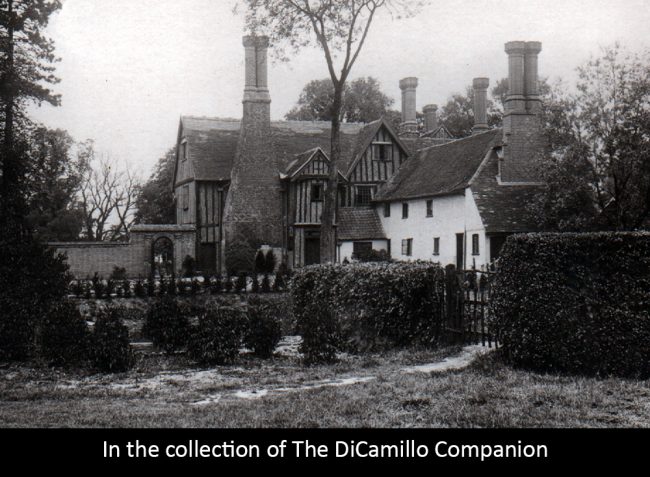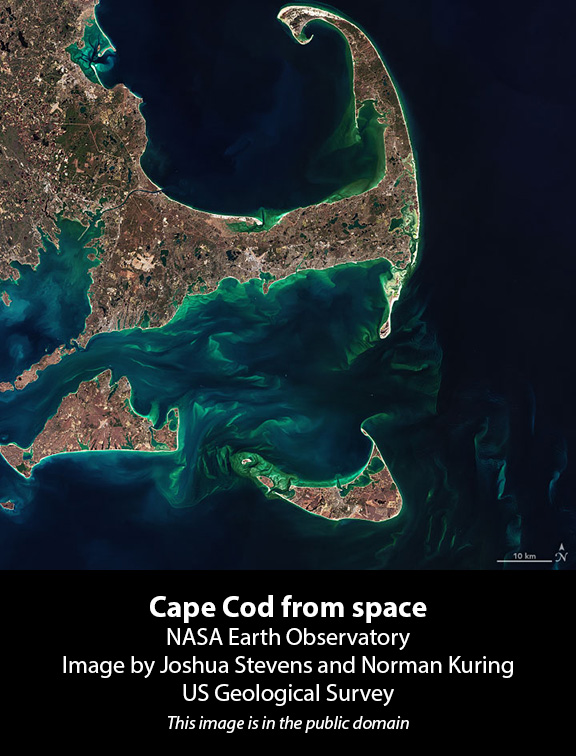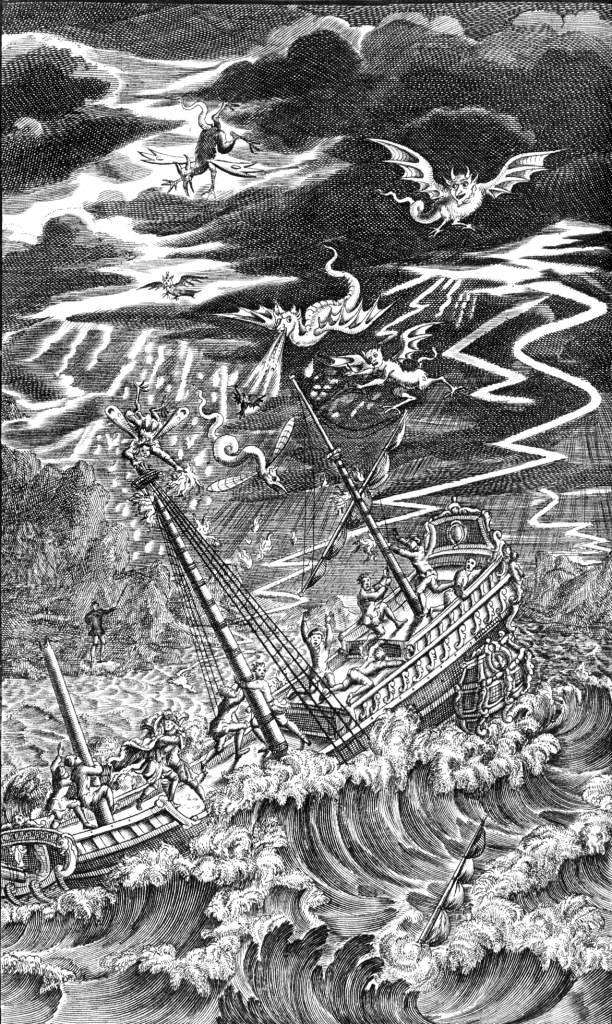
The house from a circa 1912 postcard

Capt. Gosnold of Otley named Cape Cod in 1602

The frontispiece from Rowe's 1709 edition of "The Tempest." Capt. Gosnold's log of his 1602 voyage is believed to have been the source material for Shakespeare's famous play. This image is in the public domain.
Earlier Houses: There was an earlier house called Netherhall Manor on, or near, the site of the current house.
House & Family History: The romantic, moated Otley Hall is most notable today as the ancestral home of Capt. Bartholomew Gosnold, whose family had lived in this part of Suffolk for many generations. Born in 1571, young Gosnold attended the University of Cambridge, where he came under the spell of the Rev. Richard Hakluyt. An Anglican minister who preached sermons that encouraged English colonization of the New World, the Rev. Hakluyt believed it was divine providence to spread the Protestant religion to the New World and to expand England’s economic opportunities in the Americas. Inspired by Hakluyt, Gosnold decided he would start a peaceable utopian colony in the New World. On March 26, 1602, he set sail for the Americas from Falmouth, Cornwall, on a small barque named the "Concord." On May 15, 1602, the ship sailed into what is today called Provincetown Harbor. The first recorded European to set foot on this piece of land, Gosnold named it Cape Cod as a tribute to the bounty of fish that fed his crew. A number of days later Gosnold “discovered” Martha’s Vineyard. There is no definitive source for the naming of this famous island. If you want to believe the English origin legend, Gosnold named it “Martha” to honor a female member of his family and “Vineyard” because of the wild grapes that covered much of the land. What can be said with certainty is that the town of Gosnold in the Elizabeth Islands of Massachusetts was named after Capt. Gosnold! On June 17, 1602, worried that they didn’t have sufficient provisions to carry them through the winter, Gosnold ordered his crew to board the "Concord" to begin the voyage back to England. After arrival in his native land, Capt. Gosnold spent years lobbying for another, more substantial and well-funded mission to establish a colony in the New World, often using Otley Hall as a recruiting base and meeting center for his cause. Gosnold achieved success when, on April 10, 1606, King James I issued a charter that founded the Virginia Company of London, which gave official form to the colonization endeavor. On December 20, 1606, Capt. Gosnold departed England onboard the "Godspeed," one of a contingent of three ships (the others were the "Susan Constant" and the "Discovery") headed for the New World. They made landfall on April 26, 1607, at a place they named Cape Henry in honor of Henry, Prince of Wales, the eldest son of James I. On May 14, 1607, Jamestown, the first permanent English-speaking settlement in the Americas, was founded. Even though Capt. John Smith called Gosnold the “prime mover” in the founding of Jamestown, his contributions were largely forgotten because he died on August 22, 1607, just months after the landing. Gosnold’s legacy remained relatively obscure until 2002, when the Jamestown Rediscovery team discovered what is believed to be his grave, just outside James Fort’s western corner. As a final footnote to this amazing story, Gosnold’s log of the 1602 voyage is believed to have been used as a material source for Shakespeare’s 1610-11 play "The Tempest."
Collections: In 1524, when Robert Gosnold I became justice of the peace for Suffolk, it's conjectured that he came into the orbit of Cardinal Wolsey. This is an important historical thread of possibility because the paneling in Otley's Linenfold Parlour is believed to have come from Hampton Court Palace. The paneling, of an unusually high quality for a East Anglian manor house, also shares design attributes with paneling that remains at Hampton Court today. If indeed the paneling was once in the royal palace, the most logical way that it would have arrived in Suffolk would have been via Cardinal Wolsey's visit to Ipswich.
Comments: Otley is often called one of England's loveliest houses.
Garden & Outbuildings: The house is set within a 10-acre garden.
Country Life: LXV, 152 plan, 1912.
Title: Burke's & Savills Guide to Country Houses, Volume III: East Anglia
Author: Kenworthy-Browne, John; Reid, Peter; Sayer, Michael; Watkin, David
Year Published: 1981
Reference: pg. 255
Publisher: London: Burke's Peerage
ISBN: 0850110351
Book Type: Hardback
House Listed: Grade I
Park Listed: Not Listed
Current Seat / Home of: Steve and Louisa Flavell; here since 2020.
Past Seat / Home of: SEATED AT EARLIER HOUSE: Otteley family, 12th century. SEATED AT CURRENT HOUSE: Robert Gosnold I ("the Elder), until circa 1572; Anthony Gosnold, until circa 1609; Robert Gosnold III, until 1615; Robert Gosnold V, until circa 1634; Gosnold family here until circa 1700. Mrs. Arthur Sherston, early 20th century. Nicholas Hagger, until 2020.
Current Ownership Type: Individual / Family Trust
Primary Current Ownership Use: Private Home
House Open to Public: Grounds Open to the Public - House Only Open for Events / Exclusive Use
Phone: 01473-928-790
Email: [email protected]
Website: https://www.otleyhall.co.uk
Historic Houses Member: No